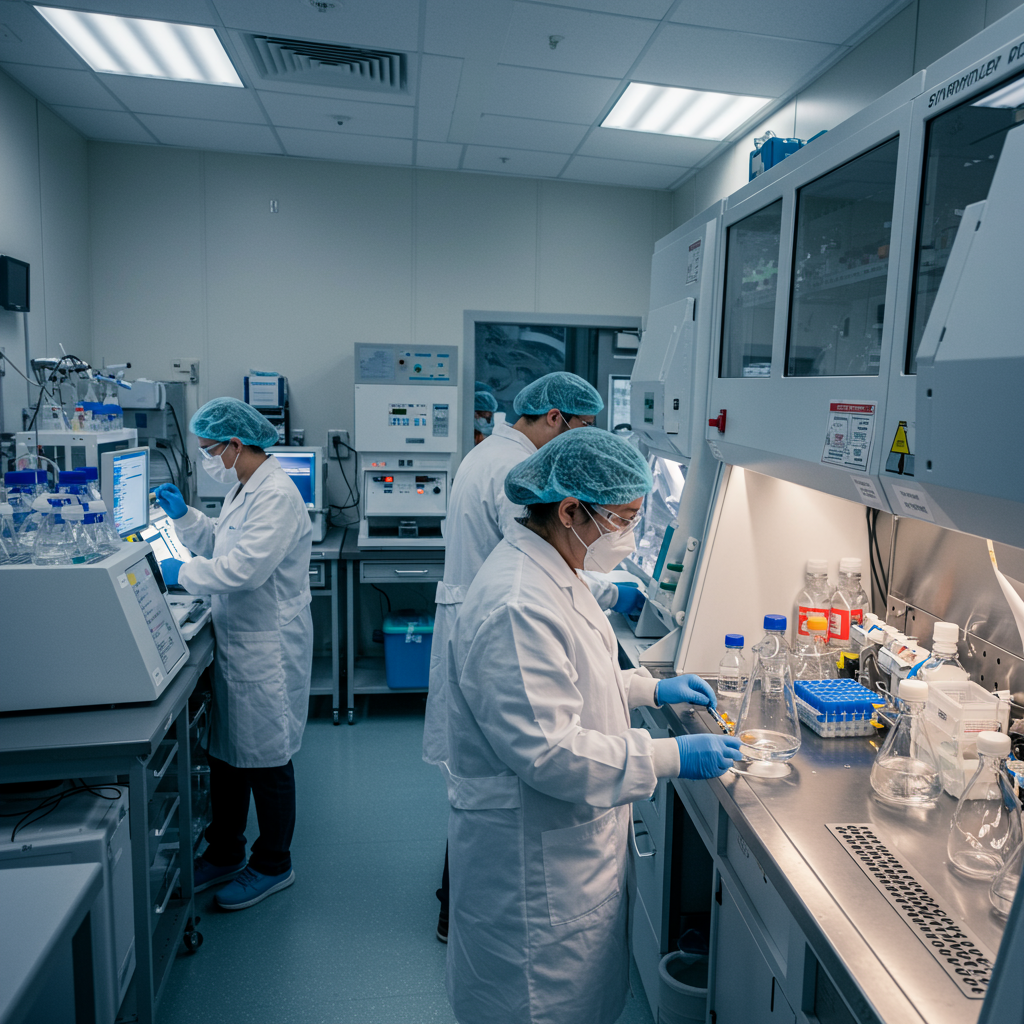Scientists have embarked on a pioneering and highly debated undertaking: creating artificial human DNA from the ground up. Described by those involved as a potential “next giant leap” in biological science, this ambitious initiative, known as the synthetic Human Genome project, marks a significant departure from merely reading the existing genetic code. It aims instead to write and build it. The project’s launch comes at a pivotal time, coinciding with the 25th anniversary of the completion of the original Human Genome Project, which successfully mapped the human genetic blueprint.
This novel research has historically faced considerable hesitancy and even been deemed taboo. Past concerns centered on the ethical implications, particularly the potential for enabling “designer babies” or introducing unpredictable, possibly negative, changes for future generations. Despite these deeply held reservations, the world’s largest medical research charity, the Wellcome Trust, has provided initial funding of £10 million (approximately $13.7 million) to kickstart the work. Wellcome leadership indicated their decision was reached after carefully weighing the potential benefits against the risks, ultimately concluding that the opportunity for positive impact outweighs the potential for harm, especially when considering the “cost of inaction” should this technology inevitably be developed elsewhere with less oversight.
Unlocking New Medical Frontiers
Proponents of the Synthetic Human Genome Project highlight its immense potential to revolutionize medicine and accelerate treatments for numerous debilitating conditions that currently have no cure. Dr. Julian Sale, a key member of the project team at the MRC Laboratory of Molecular Biology in Cambridge, UK, expressed boundless optimism. He stated that the possibilities are virtually limitless.
Dr. Sale envisions therapies emerging from this research that could significantly improve people’s health as they age. The goal is healthier aging, reducing the burden of disease later in life. Furthermore, scientists hope to engineer disease-resistant cells using this synthetic approach. These cells could then be used to repair and repopulate damaged organs, including vital ones like the liver, heart, and even components of the immune system. The ability to build genetic material from scratch offers unprecedented control.
Prof. Matthew Hurles, Director of the Wellcome Sanger Institute, which played a major role in sequencing the original human genome, explained the fundamental advantage. Building DNA synthetically allows scientists to directly test theories about how DNA truly functions in ways simply impossible when restricted to only tweaking existing DNA found in living organisms. This capability offers a powerful new tool for fundamental biological discovery.
Building the Blueprint of Life
Every cell in the human body (except red blood cells) contains DNA. This remarkable molecule carries all the genetic instructions required to build and operate a living being. DNA is constructed from a remarkably simple alphabet of just four chemical bases, commonly represented by the letters A, G, C, and T. These bases repeat in various sequences, encoding the vast amount of information that defines our physical characteristics.
The original Human Genome Project empowered scientists to “read” this genetic code, much like scanning a complex barcode. The new Synthetic Human Genome Project takes this concept a monumental step further. Its aim is not just to read DNA but to “write” it – to create parts of this molecule, perhaps eventually the entire human genome, molecule by molecule, from scratch.
Scientists will begin by developing the necessary tools and techniques to synthesize progressively larger segments of human DNA. The ambitious initial goal within the five-year timeframe is the successful construction of a synthetic human chromosome. Chromosomes are the complex structures within cells that contain our genes, which govern everything from our basic development to daily cellular repair and maintenance.
Once synthetic chromosomes or large DNA sections are built, researchers can study and experiment on them in controlled environments. This experimentation is expected to yield profound insights into the intricate ways genes and DNA regulate our bodies. Understanding how these genetic instructions work, and crucially, how they go wrong in disease, is fundamental to developing more effective treatments.
Navigating Deep Ethical Waters
Despite the promising medical horizons, the Synthetic Human Genome Project is shadowed by significant ethical complexities and fears regarding potential misuse. Critics worry intensely that the power to create human DNA could be repurposed for harmful objectives, intentionally or unintentionally.
Dr. Pat Thomas, Director of the campaign group Beyond GM, voiced these concerns. While acknowledging the good intentions of most scientists, she cautioned that the scientific knowledge and tools developed could be diverted for negative uses, even potentially for warfare. The creation of artificial human DNA raises serious questions about biological weapons.
Prof. Bill Earnshaw, a highly respected genetic scientist at Edinburgh University who previously developed a method for creating artificial human chromosomes, shared these fears, famously stating, “The genie is out of the bottle.” He warned that once the capability to synthesize human DNA exists, it becomes exceedingly difficult, perhaps impossible, to prevent potentially unscrupulous individuals or organizations with access to the necessary machinery from synthesizing harmful material. Prof. Earnshaw highlighted specific potential misuses, including the creation of biological weapons, the development of “enhanced” humans with modified traits, or even the engineering of creatures incorporating human DNA.
Beyond the immediate misuse risks, the technology also prompts challenging questions about ownership and identity. Ms. Thomas, along with Prof. Earnshaw, raised concerns about the commercialization of synthetic biology. If researchers become capable of creating synthetic body parts or even more complex synthetic biological entities, who would hold the legal rights to these creations? Furthermore, who would own or control the vast amounts of data generated from studying and experimenting with these synthetic biological systems? These questions touch upon fundamental aspects of personhood and intellectual property in a future shaped by advanced biotechnology.
A Commitment to Responsible Development
Recognizing the profound ethical, social, and moral questions inherent in synthesizing human DNA, the Wellcome Trust emphasized that its decision to fund the project was made with great deliberation. Dr. Tom Collins, who was involved in approving the funding, explained their reasoning. He stated they considered the significant “cost of inaction,” acknowledging that this powerful technology is likely to be developed eventually by someone, somewhere. By funding it now, the Wellcome Trust aims to ensure the research is conducted in the most responsible manner possible.
A crucial element of the project is a dedicated social science program running concurrently with the scientific work. Led by sociologist Prof. Joy Zhang at the University of Kent, this program is designed to proactively engage with the broader societal implications of the research.
Prof. Zhang explained the program’s objective is to gather diverse perspectives. They intend to seek the views of scientific experts, fellow social scientists, and critically, the general public. The goal is to understand how people relate to this potentially transformative technology, what benefits they might see, and most importantly, what questions and concerns they have. This integrated approach signals an intent to confront the ethical landscape upfront rather than addressing it as an afterthought.
It is important to note the current scope of the project. The scientists’ work is strictly confined to laboratory settings. Experiments will take place in test tubes and petri dishes. There is explicitly no attempt being made at this stage to create synthetic living organisms. However, even within these controlled lab conditions, the technology promises researchers an unprecedented level of control over manipulating and understanding human biological systems. As Prof. Earnshaw’s “genie out of the bottle” comment suggests, the potential for future applications, both positive and negative, stemming from this foundational capability remains a significant point of discussion and concern.
Frequently Asked Questions
What is the Synthetic Human Genome Project and how is it different from the original Human Genome Project?
The Synthetic Human Genome Project is a new initiative aiming to build artificial human DNA from scratch. This differs fundamentally from the original Human Genome Project, which focused on reading the existing sequence of chemical bases (A, G, C, T) in human DNA. The synthetic project seeks to write or create these DNA sequences, potentially building large sections or even entire chromosomes molecule by molecule.
What are the main ethical concerns surrounding the creation of artificial human DNA?
Key ethical concerns include the potential for misusing the technology. Critics worry it could lead to “designer babies,” unintended changes for future generations, or the development of biological weapons. There are also fears about creating enhanced or modified humans and questions surrounding the ownership of synthetic biological material or data derived from it.
How is the Synthetic Human Genome Project addressing the potential risks and ethical questions?
The project, primarily funded by the Wellcome Trust, is acknowledging the ethical challenges upfront. The Wellcome Trust stated its decision was partly based on a desire to guide the technology’s development responsibly, anticipating that it may be developed eventually anyway. A dedicated social science program runs alongside the scientific work to study the socio-ethical implications and gather input from experts, social scientists, and the public on their concerns and perspectives.
Creating artificial human DNA represents a monumental scientific and ethical undertaking. While proponents envision breakthrough medical treatments and a deeper understanding of life itself, critics raise serious alarms about the potential for misuse and the profound societal implications. As work begins in UK laboratories, the world watches to see how this powerful new capability will be developed and managed, striving to balance scientific progress with responsible stewardship of the building blocks of life.




